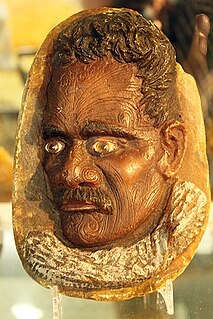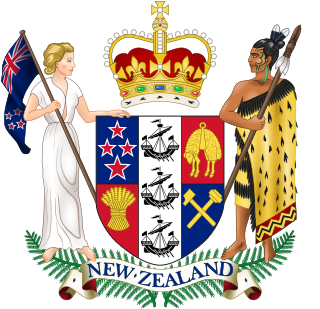 W
WThe economy of New Zealand is a highly developed free-market economy. It is the 51st-largest national economy in the world when measured by nominal gross domestic product (GDP) and the 67th-largest in the world when measured by purchasing power parity (PPP). New Zealand has a large GDP for its size and population. The country has one of the most globalised economies and depends greatly on international trade – mainly with Australia, Canada, China, the European Union, Japan, Singapore, South Korea and the United States. New Zealand's 1983 Closer Economic Relations agreement with Australia means that the economy aligns closely with that of Australia.
 W
WPoverty in New Zealand deals with the incidence of relative poverty in New Zealand and its measurement. Between 1982 and 2011, New Zealand's gross domestic product grew by 35%. Almost half of that increase went to a small group who were already the richest in the country. During this period, the average income of the top 10% of earners in New Zealand almost doubled going from $56,300 to $100,200. The average income of the poorest tenth increased by only 13% from $9700 to $11,000.
 W
WBusiness.govt.nz is the New Zealand government's online resource for small business, bringing together information from across the public and private sectors, packaged into tools and resources designed with small businesses in mind. It exists to make succeeding in business easier for New Zealand businesses.
 W
WThe Australia–New Zealand Closer Economic Relations Trade Agreement, commonly known as Closer Economic Relations (CER), is a free trade agreement between the governments of New Zealand and Australia. It came into force on 1 January 1983, but the actual treaty was not signed until 28 March 1983 by the Deputy Prime Minister of Australia and Minister for Trade, Lionel Bowen and the New Zealand High Commissioner to Australia, Laurie Francis in Canberra, Australia.
 W
WThe economic history of New Zealand dates to before European colonisation of the country. By the 20th century, it had become one of the most globalized economies in the world, relying heavily on international trade with developed countries including Australia, Canada, China, European Union, the United States, Japan, and South Korea. It is a mixed economy that functions on free-market principles and has a sizable manufacturing and service sector and an efficient agricultural sector. New Zealand has the 54th largest export economy in the world measured by nominal gross domestic product. In 2016, New Zealand exported a total of NZ$35.1billion and imported a total of NZ$35.4 billion, with its top exports being concentrated milk and the top imports being cars. New Zealand has an extremely diverse market economy with a sizable service sector that accounted for 63% of all GDP in 2013. Other industries including mining, manufacturing, waste services, electricity and gas accounted for 16.5% of GDP in 2013 while the primary sector only accounted for 6.5% of GDP, despite continually dominating New Zealand's exports. The biggest capital market for New Zealand is known as the New Zealand Exchange. As of June 2018 the NZX had listed over 300 securities with a market capitalization of NZD $164.5 billion.
 W
WEconomic inequality in New Zealand is one of the social issues related to that country.
 W
WNew Zealand's exclusive economic zone (EEZ) covers at least 4,083,744 square kilometres (1,576,742 sq mi), which is approximately 15 times the land area of the country. Sources vary significantly on the size of New Zealand's EEZ; for example, a recent government publication gave the area as roughly 4,300,000 km2. These figures are for the EEZ of New Zealand proper, and do not include the EEZs of other territories in the Realm of New Zealand.
 W
WKauri gum is a fossilised resin extracted from kauri trees, which is made into crafts such as jewellery. Kauri forests once covered much of the North Island of New Zealand, before Māori and European settlers caused deforestation, causing several areas to revert to sand dunes, scrubs, and swamps. Even afterward, ancient kauri fields continued to provide a source for the gum and the remaining forests.
 W
WThe KiwiSaver scheme, a New Zealand savings scheme, came into operation from Monday, 2 July 2007. Participants can normally access their KiwiSaver funds only after the age of 65, but can also use them as a deposit for a first home.
 W
WThe New Zealand Meat Board, previously known as Meat New Zealand, was established in 1922 as the New Zealand Meat Producers Board, under an Act of Parliament, the Meat-export Control Act 1921–22. It provided for producer, government and business representation and took responsibility for marketing New Zealand's meat for export. Today, the Meat Board provides quota and reserves management while Beef + Lamb New Zealand provides industry good functions.
 W
WMedian household income is commonly used to measure the relative prosperity of populations in different geographical locations. It divides households into two equal segments with the first half of households earning less than the median household income and the other half earning more.
 W
WThe Minister for Economic Development is a minister in the government of New Zealand with the responsibility of promoting development of New Zealand's economy, and is in charge of the Ministry of Business, Innovation and Employment. The position was established in 1999.
 W
WThe Minister of Commerce and Consumer Affairs is a minister in the government of New Zealand with the responsibilities including corporate law and governance, financial markets, competition policy, consumer policy, protecting intellectual property, and trade policy and international regulatory cooperation, most of which is administered by the Ministry of Business, Innovation and Employment. The position was established as Minister of Commerce in 1987 and superseded the previous office of Minister of Trade and Industry.
 W
WThe New Zealand Emissions Trading Scheme is a partial-coverage all-free allocation uncapped highly internationally linked emissions trading scheme. The NZ ETS was first legislated in the Climate Change Response Amendment Act 2008 in September 2008 under the Fifth Labour Government of New Zealand and then amended in November 2009 and in November 2012 by the Fifth National Government of New Zealand.
 W
WOccupy Movement protests took place in New Zealand, beginning on 15 October 2011 with the Occupation of Auckland. Occupy protests took place in Auckland, New Plymouth, Wellington, Lower Hutt, Christchurch, Dunedin, and Invercargill.
 W
WThe Reserve Bank of New Zealand is the central bank of New Zealand. It was established in 1934 and is constituted under the Reserve Bank of New Zealand Act 1989. The governor of the Reserve Bank is responsible for New Zealand's currency and operating monetary policy. The Bank's current Governor is Adrian Orr. Employees of the bank operate under the framework of a managerial hierarchy.
 W
WThink Big was an interventionist state economic strategy of the Third National Government of New Zealand, promoted by the Prime Minister Robert Muldoon (1975–1984) and his National government in the early 1980s. The Think Big schemes saw the government borrow heavily overseas, running up a large external deficit, and using the funds for large-scale industrial projects. Petrochemical and energy related projects figured prominently, designed to utilize New Zealand's abundant natural gas to produce ammonia, urea fertilizer, methanol and petrol.